- Details
- Hits: 6607
Station: St. Ignace, MI
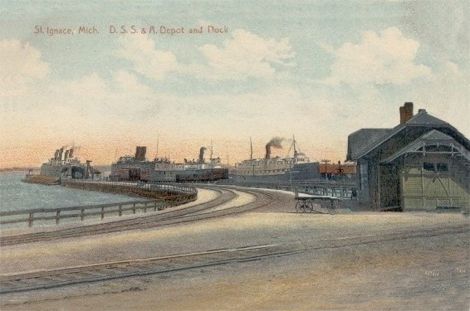
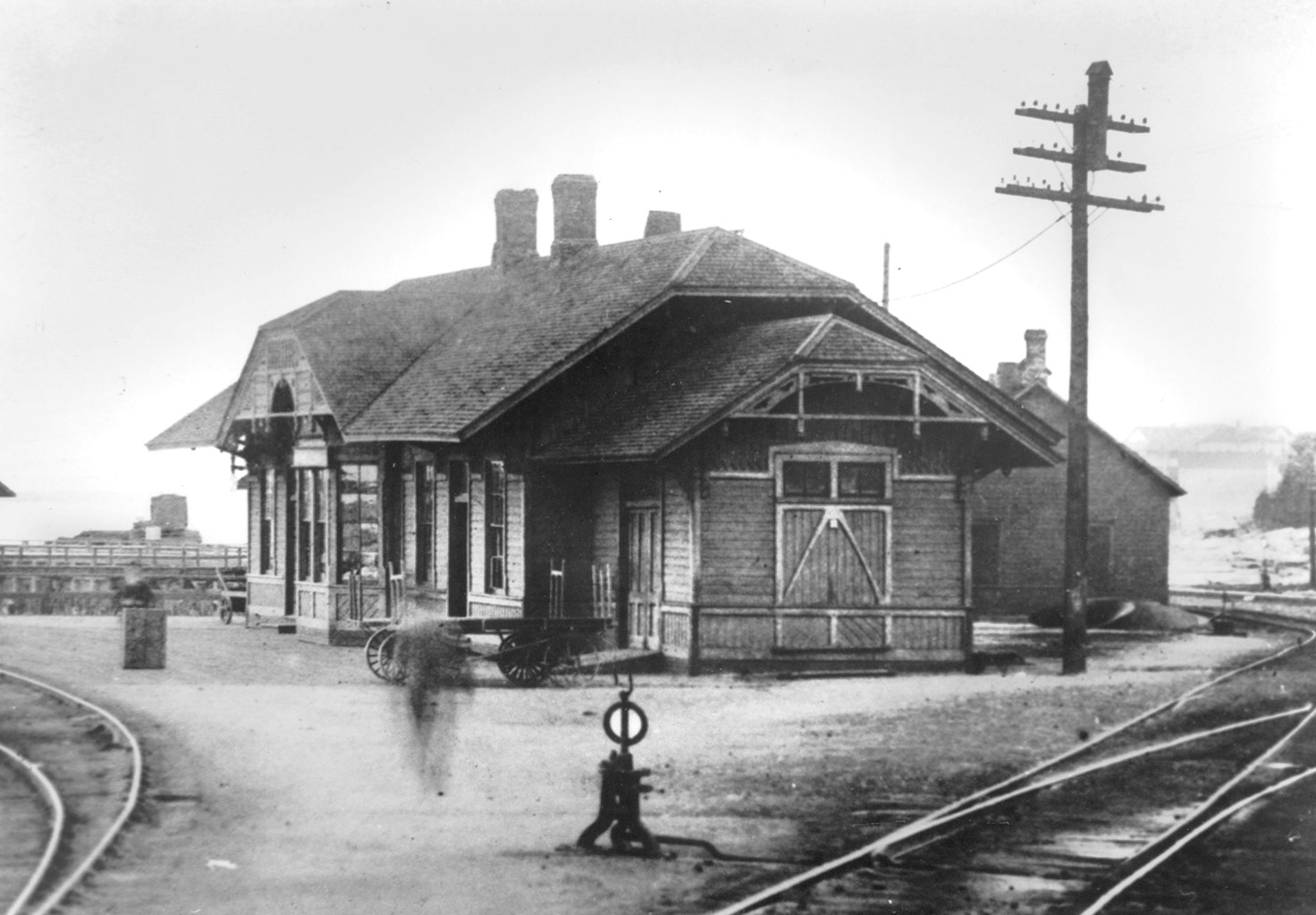
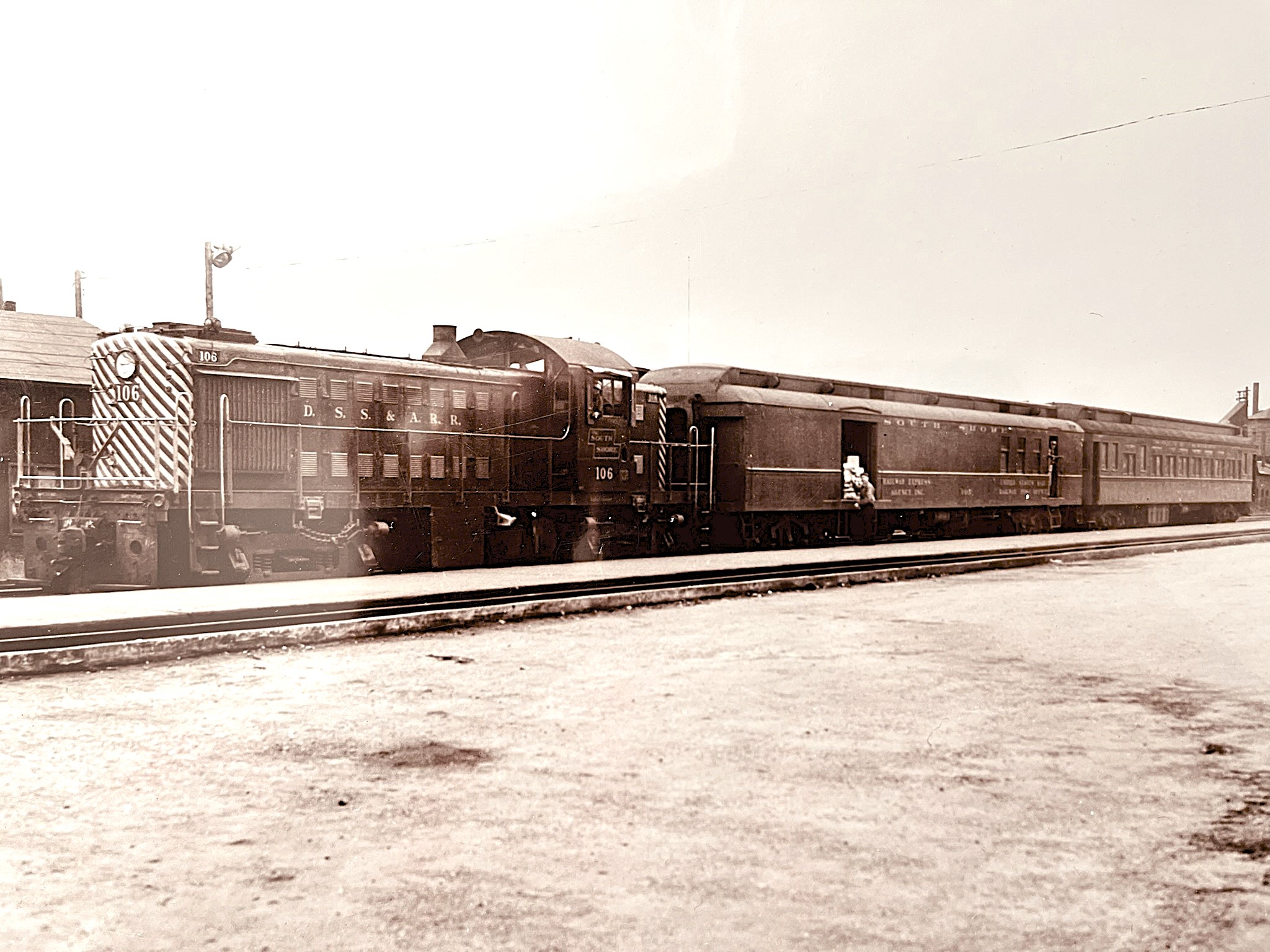
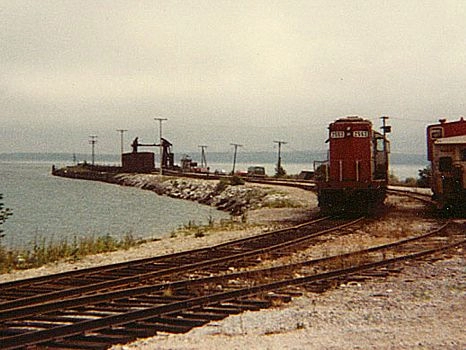
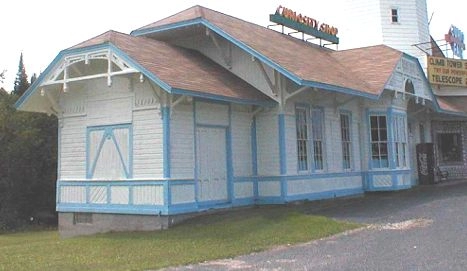
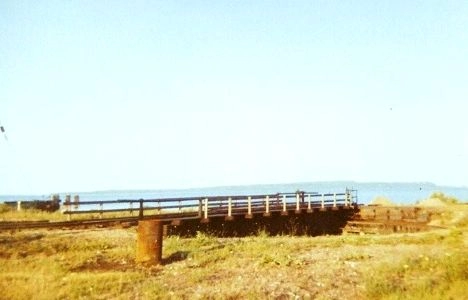
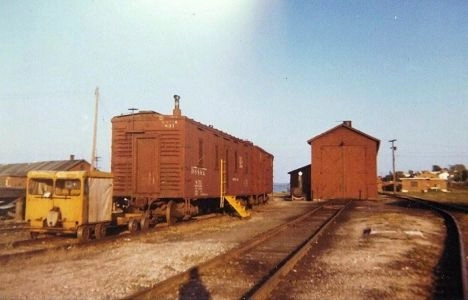
SwitchesStIgnaceDateUnknown[NeilPlagens].jpg)
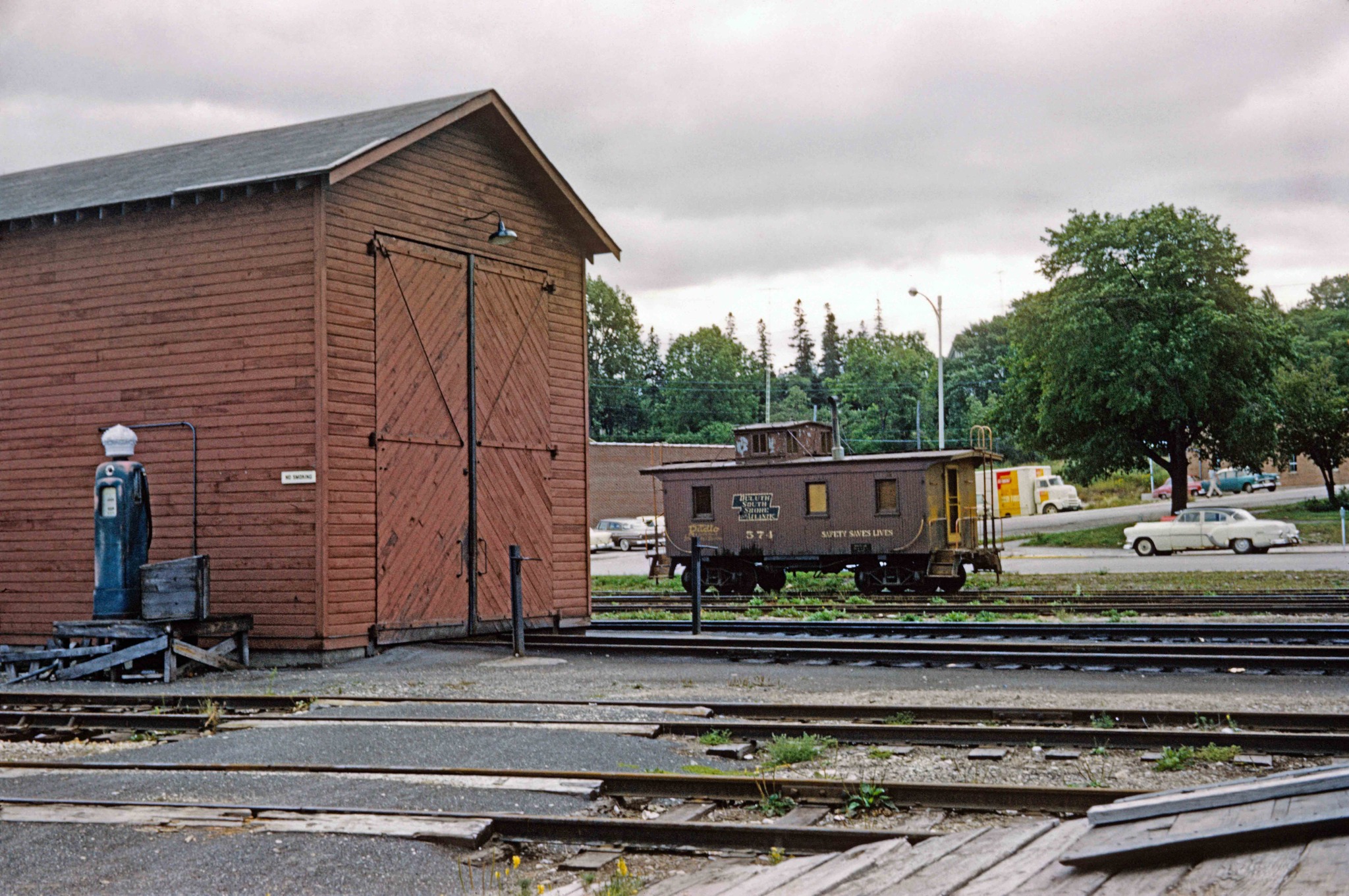
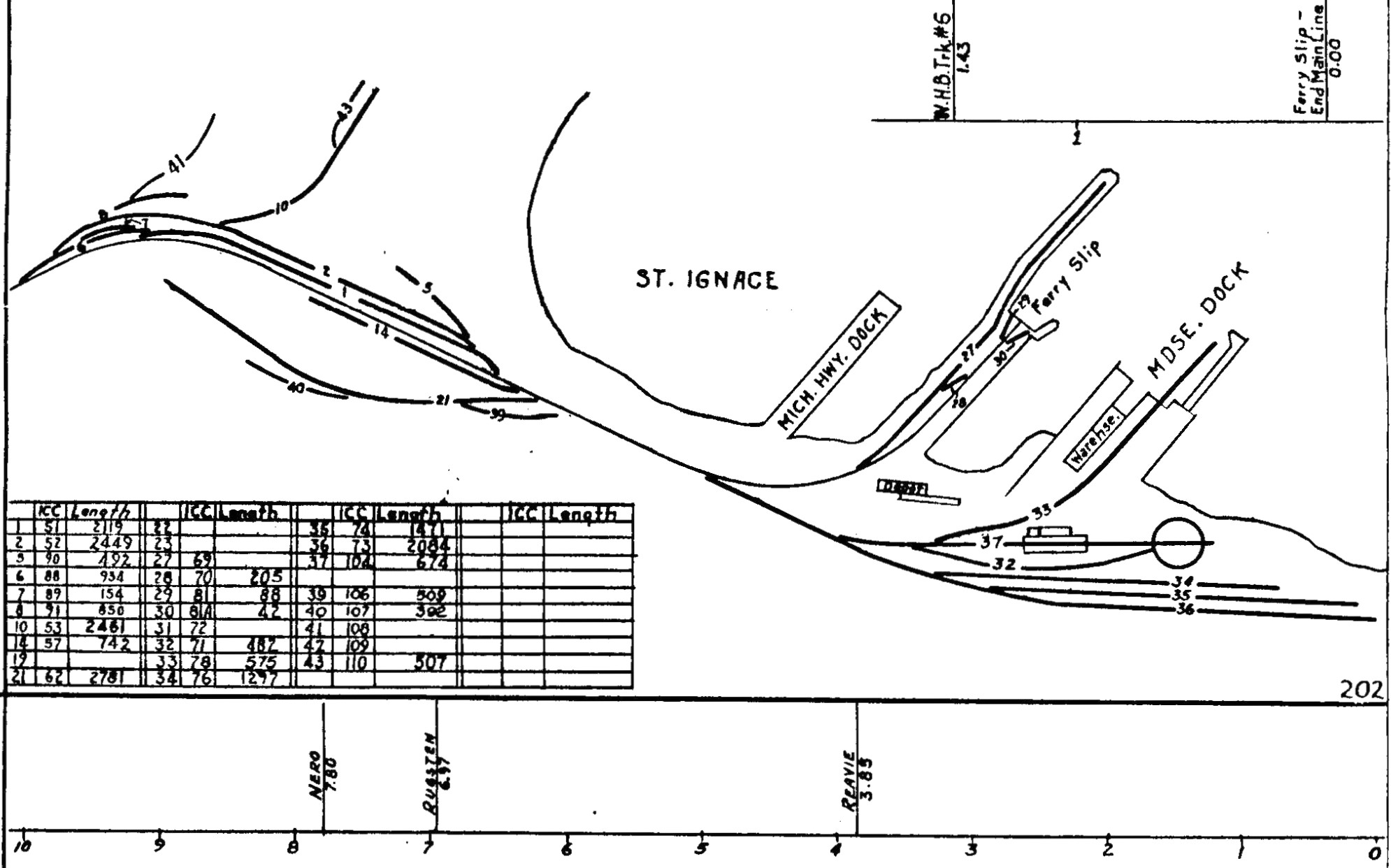 St. Ignace was founded around 1671 as a Catholic Jesuit mission. The town was also a trading post for furs and other commodities. It became a village in 1882 and a city in 1883.
St. Ignace was founded around 1671 as a Catholic Jesuit mission. The town was also a trading post for furs and other commodities. It became a village in 1882 and a city in 1883.
Image Info: Top, a postcard view of the DSS&A original depot and docks at St. Ignace. This depot was later moved to a location on US-2 west of town and was replaced with the South Shore depot from Moran, up the line. Note the railroad ferry at the end of the dock, along with other passenger ferries. 2nd photo, another view of this depot in a photograph. [CMUL]. 3rd photo, a 1950's view of Train No. 2, an eastbound DSS&A passenger train arriving at the St. Ignace depot, which is near the ferry dock. Engine 106 is an RS-1, a first generation diesel locomotive. It had a steam generator in the short hood to heat the passenger train. [Ron Kaminen collection]. 4th image, a 1980 view of the boat slip and lead with a Soo Line engine and caboose waiting for the next boat arrival. [Timothy Ryan]. 5th photo, the original South Shore depot now converted to a store and located on US-2 west of town. [T.J. Gaffney]. 6th photo, a 1963 view of the turntable at St. Ignace. [Charles Geletzke Jr.]. 7th photo, a 1963 photo of the engine house at St. Ignace West Yard. [Charles Geletzke]. 8th photo, DSS&A o. 100, an RS-1, switches St. Ignace in the 1960s. [Neil Plagens]. 9th photo, DSS&A caboose 574 at the St. Ignace engine house in 1963. [Unknown photographer]. 10th image, a track diagram of the DSS&A in St. Ignace in the 1950's. This is from a railroad track book.
Notes
The railroad dock at St. Ignace was just south of the Railroad Car Ferry Slip/Dock. The first St. Ignace passenger and freight depots were on this dock. A passenger bridge connected the railroad dock with the railroad car ferry slip/dock. A switch went southeast from the railroad dock to the railroad lumber dock. [CB/MIHX8]
East Yard Switch. (0.19 miles west of the Railroad car ferry dock/slip). The East Yard was located south of the railroad car ferry dock. The turntable and engine house were located at the northeast end of the East Yard. [CB/MIHX8]
Martel Charcoal Iron Blast Furnace Switch. (0.36 miles west of the Railroad car ferry dock/slip).
Ore Dock Switch. (0.39 miles west of the Railroad car ferry dock/slip). The ore dock was built in 1882 and stood where the State of Michigan built it's auto car ferry dock which is north of the railroad car ferry dock at St. Ignace. The ore dock was dismantled a mere two years after having been built and components of the dock were sent to Marquette for the new ore dock under construction there in 1884. [CB/MIHX8]
West Yard Coaling Station. (1.0 miles west of the Railroad car ferry dock/slip). There was a turntable and roundhouse on the west side of the railroad yard just south and east of Marquette street. [CB/MIHX8]
Saw Mill Spur. (1.2 miles west of the Railroad car ferry dock/slip). A spur ran west, south of Reagan Street to the mill on the bay. The spur served the Mackinaw Lumber Company mill and successors such as the Jones & Kerry Mill. [CB/MIHX8]
Gravel Pit Switch. (1.5 miles west of the Railroad car ferry dock/slip). The gravel from this site was used to ballast the DSS&A track. The gravel pit spur went northwest beyond where I-75 expressway runs on the west side of St. Ignace. [CB/MIHX8]
The Martel Charcoal Iron Blast Furnace spur ran south approximately one mile to the blast furnace that was located approximately where the U.S. Coast Guard station and Arnold Transit Company Freight terminal are located [2004]. The blast furnace operated between about 1882 and 1893. The financial Panic of 1893 led to the closing of the furnace.[CB/MW/MIHX8]The old St. Ignace depot was 19' x 72' and was built in 1890 and existed until 1975. The replacement depot was 30' x 70' and was moved from Moran in July, 1947. [Robert Oom].
The DSS&A station was built in 1890 replacing an older model. It is a rectangular, wood-framed building with a hipped roof with wide overhanging eaves supported by wooden brackets. The station is 20' by 150' long divided equally into a passenger section and freight house. [UPM]
Time Line
1880. Work on the DM&M is being more vigorously pushed now. The iron is being laid on the first 20 miles as fast as it arrives. One 32 ton locomotive and a large number of flat cars, manufactured by the Michigan Car Company at Detroit, have already arrived. Contractor J.D. McDonald has largely increased his working force and is pushing matters at a lively rate. A large boarding house has been put up near Point St. Ignace and a large force is at work building docks, preparing the depot grounds and cutting out and grading the road. [NTR-1880-0626]
1882. From the Cheboygan Democrat, May 18, 1882: We learn that considerable trouble is experienced by the D.M.&M. (Detroit, Mackinac & Marquette) people in getting their ore cars back from St. Ignace owing to their tendency to fly the track when empty. The cars are new, and the springs being stiff as yet, they do not yield readily to accommodate themselves to the sinuosities (sic) of the track; hence leave the rails on very slight provocation. With time and use this fault will disappear, of course, but in the mean time it is a great annoyance to the train men. Lately, the plan has been adopted of loading them with gravel at St. Ignace, which is brought back as "ballast" on the cars, and used afterwards to ballast the road. This plan entails some labor, but as there is considerable gravel needed along the line the time required to load the cars with it at St. Ignace is not wholly lost. From the Marquette Journal, reprinted in the Cheboygan Democrat. [CD/MIHX8]
1890. The DSS&A Roundhouse was located at Ellsworth and Marquette Streets and was built about 1890. [UPM] The DSS&A had a water tower at St. Ignace as of 1907. [SSP1907]
1904. June 25. The city water and electric light plant was destroyed by fire. Loss about $5,000. The city was for a time without light or fire protection. [SJH-1904-0702]
1960. The oldest DSS&A St. Ignace depot was moved from near the railroad car ferry dock area to the south side of US-2 approximately 2 miles west of the I-75 expressway and is now a business It was moved around 1960. The DSS&A depot which is now along the waterfront was their depot from Moran. When the South Shore closed the Moran station in the mid-1950's they moved the depot to St. Ignace as it was a much bigger and better depot. It is now a restaurant [2004]. [CB]
1964. The Soo Line lays off the last switch crew at St. Ignace. The crew had been used to load trains on the car ferry to Mackinaw City. The layoff affects five Soo Line employees, the switch engine engineer, fireman and three switchmen. Regular train crews will now load and unload their own freights on the car ferry. Abandonment of the ferry is pending at the ICC. [SEN-1964-0924]
1972. Some 100 tons of coal is on its way to the Keweenaw Bay Indian Reservation at Baraga in Michigan's upper peninsula. The 100 tons is part of a 750-ton coal pile belonging to the Arnold Ferry Line. It has been sitting useless on the island's dock since the company's two major coal customers, the Grand Hotel and Mackinac College, switched to oil.
Ferry line owner Otto Lang finally gave up looking for a buyer and offered to give the coal away if someone would just cart it off. Officials at the Keweenaw reservation, where coal is used for heat, got wind of Lang's offer and began looking for a way to transport the coal 200 miles from the island to the reservation. Derocher Dock and Dredge Co. of Cheboygan agreed to transport the coal from the island to the mainland at St. Ignace. The Soo Line agreed to pick it up and carry it across the upper peninsula to Baraga, where the Upper Peninsula Solid Forest Products offered free use of its rail siding facilities for unloading. All the transportation was free, which amounted to a $4,000 donation. The reservation would have taken more but they can only store 100 tons at a time. They hope to go back for more next summer. [LSJ-1972-1130]
Industry
1888. The Mackinac Lumber Company has a mill at St. Ignace. [PHTH-1888-1126] They have mills at Trout Lake and Les Cheneaux.
Bibliography
The following sources are utilized in this website. [SOURCE-YEAR-MMDD-PG]:
- [AAB| = All Aboard!, by Willis Dunbar, Eerdmans Publishing, Grand Rapids ©1969.
- [AAN] = Alpena Argus newspaper.
- [AARQJ] = American Association of Railroads Quiz Jr. pamphlet. © 1956
- [AATHA] = Ann Arbor Railroad Technical and Historical Association newsletter "The Double A"
- [AB] = Information provided at Michigan History Conference from Andrew Bailey, Port Huron, MI

